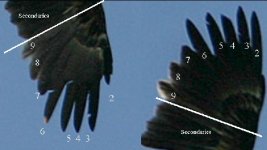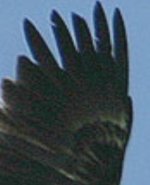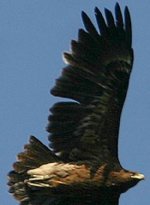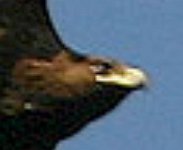"You can do a full wing foruma on this one!"
But given that it is in active primary moult how can you know which primaries you are looking at?, it isn't possible to isolate either p1 or p10 in the images presented. P7 could be missing on both wings?
I don't know of any suggestions that Indian Spotted ever lacks the pale wing covert versus darker flight feather contrast which is such a useful feature on many LSE (pomarina). Sumit's bird shows very dark coverts which appear concolorous with the flight feathers. I can't see any way of identifying this bird with certainty, GSE cannot be excluded.
Some of the pictures of reputed Indian Spotted Eagles:
http://www.delhibird.org/images/Ind...ttedEagle_1.jpg
http://www.delhibird.org/images/Ind...ttedEagle_5.jpg
look like dark Tawny Eagles to me!
Sheryl
But given that it is in active primary moult how can you know which primaries you are looking at?, it isn't possible to isolate either p1 or p10 in the images presented. P7 could be missing on both wings?
I don't know of any suggestions that Indian Spotted ever lacks the pale wing covert versus darker flight feather contrast which is such a useful feature on many LSE (pomarina). Sumit's bird shows very dark coverts which appear concolorous with the flight feathers. I can't see any way of identifying this bird with certainty, GSE cannot be excluded.
Some of the pictures of reputed Indian Spotted Eagles:
http://www.delhibird.org/images/Ind...ttedEagle_1.jpg
http://www.delhibird.org/images/Ind...ttedEagle_5.jpg
look like dark Tawny Eagles to me!
Sheryl







